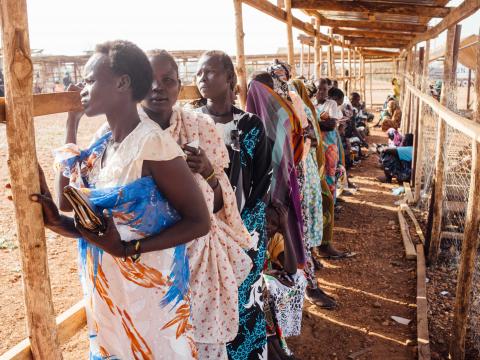Where are we on forced migration?

Google the recent meetings on forced migration and you will find highly mixed opinions on the outcomes. They were significant by virtue of the meetings taking place and language supporting the overall rights and protection of children on the move was welcomed. On the other hand, there was disappointment at the lack of commitment to concrete targets, timelines and insufficient provision for certain populations (eg. detention of children). Ultimately, the value of these processes will be measured in the impact they have on the lives of families in camps like Kakuma and Za’atari, and for the millions of displaced people living in urban settings. But as these results are some years out, I spent 2016 UNHCR Executive Committee meeting (Excom) trying to understand how changing frameworks impact the short and long term services for displaced people.[1]
Work doesn’t stop now that the meetings are done
During ExCom discussion it was reiterated that the New York Declaration was the first significant step in a multilateral process that will continue for the next two years (see Figure 1). There are deficiencies in the text of the declaration (see Civil Society Scorecard on Declaration here) but UNHCR Assistant High Commissioner Turk challenged us to ‘use the NY Declaration as a starting point to amplify and strengthen protection.’ (An eloquent and detailed explanation of UNHCR’s protection priorities as outlined at ExCom is available here and the NGO comments on protection are here).
Figure 1: Tentative Milestones for Refugee Compact
Piloting the Comprehensive Refugee Response Framework & multi-year funding
In terms of practical action, the next step for UNHCR is pilot tests of the Comprehensive Refugee Response Framework (CRR), which should follow the priorities in Annex 1 of the New York Declaration: reception and admission; support for immediate & on-going needs; support for hosting countries and communities; as well as durable solutions in terms of return, resettlement and integration with the host communities. Locations are under negotiation right now—Uganda and Northern Triangle in Central America are front runners—with a number of contexts under consideration. It was unclear during the week if pilot programmes will include resettlement and it looks unlikely that they will include internal displacement, despite IDPs being the largest population of concern globally. Daniel Endres, Director of the UNHCR External Relations Division, has been appointed to lead a task team leading the CRR process.
The Comprehensive Refugee Response Framework pilots will be running at the same time as the six 2016-2019 multi-year planning/funding pilots as well as a number of contexts, like the 3RP for the Syria crisis that have many elements in common with the CRR. NGOs working in both pilot and standard implementation countries will almost certainly see some differences in approaches and modalities of work context to context in 2017. We should also use lessons learned from the existing processes to influence the new ones.
Action to address the funding gap
In the face of record levels of displacement and the scale of the humanitarian funding gap, NGOs are right to call for more urgent action. In the current South Sudan refugee response, World Vision is a key partner in numerous sectors at the Bidibidi reception site in Uganda where, at the time of writing, World Food Programme has had to halve rations to those who arrived in July and August in order to provide rations to more recent arrivals. Uganda is a pilot country for multi-year funding and a front-runner to pilot the Comprehensive Refugee Response Framework as well. If and how the pilots will ease the challenges of underfunding remains to be seen.
ARID’s Musarait Kashmiri, the 2016 NGO rapporteur, called for predictable, adequate and accessible funding for partners at ExCom and shared progress made in 2016:
- 2016 was a record year for private donations to UNHCR. Private funds are typically un-earmarked, which makes this a critical source of funding for underfunded emergencies.
- 2016 was also a record year for early remittances of pledged funding (i.e. getting donations into UNHCR within the first months of the year). This is critical for project planning.
But the reality remains that UNHCR faces a 45% shortfall overall, and an 80% shortfall in some of the world’s most desperate situations. This multiyear trend is likely to continue in 2017.
Looking ahead with both short and long term priorities in mind
Many questions remain outstanding when it comes to improving provisions for Internally Displaced People; alternatives to detention for children seeking asylum (IDC, 37); increasing youth participation and programming; and providing solutions to end statelessness. To find tangible, practical solutions for these Persons of Concern we need to increase resources and take a truly comprehensive approach to partnership. States, UN agencies, NGOs and the private sector together need to do what matters most: improve protection and service to Persons of Concern in 2017 and beyond.
- Learn more about the affects of conflict on children in our Cost of Conflict for Children Report: Five years of the Syrian Crisis
- Read World Vision's policy position on forced displacement
- Read other blogs from Rachel Criswell: Refugees, migrants and internally displaced people & The bridge between humanitarian and development work has been built, are we ready to cross it?
[1] Executive a gathering of the ninety-eight member states, UNHCR leadership, and a small delegation of NGOs that convened in Geneva in the first week of October. http://www.unhcr.org/executive-committee.html
